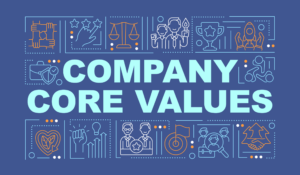In theory, employee surveys should be a home run for HR departments. Ask your employees if they’re happy, why they’re happy (or unhappy), and what they need. They tell you, and you make it happen. Easy. Check. Move on to the next.
Except…employee surveys usually don’t work that way, or get the right kind of results. In fact, surveys are an increasingly outdated platform for input and feedback.
With the competition breathing down your neck, just waiting for an opportunity to steal your top talent, measuring and nurturing employee engagement is a major priority. But in today’s marketplace, traditional employee surveys have been brushed aside for emerging technologies. In particular, employee engagement apps (like hubEngage). It’s the job of employee engagement apps to keep your employees connected to HR, leadership and each other. To inject itself into their day-to-day work life, and to make engagement a natural part of your workflow.
At hubEngage, we built a powerful platform that puts employee engagement at your fingertips. it allows departments across your organization to deliver the right content and resources, to the right people, and at the right times.
But where employee engagement apps like hubEngage really shine, and how they really best employee surveys, is in the information they gather, in addition to the information they deliver to your team. Real-time data allows you to see what is working and what’s not, and our platform allows employees to also deliver additional feedback through short, in-app questions or surveys, rather than drawn-out traditional Q&As.

1. Many employees simply don’t trust them.
Many traditional employee surveys come with a promise of anonymity. But savvy workers today know that links, surveys and responses are trackable. As a result, many avoid providing candid feedback, fearing retaliation or negative ramifications as a result of their responses.
Another side of the “trust” coin entails what will be done with candid feedback. If your organization consistently requests feedback but doesn’t take action on that feedback, your employees may feel that providing input is useless. And an apathetic workforce is dangerous to any business.
2. Your employees are (really) busy.
When push comes to shove, most employees nowadays are simply busy all the time. Who has time to complete a 10-minute (or longer!) survey? This is particularly true for those industries with employees on the ground, not sitting in an office. Who has time to sit down, log in and fire up a survey? When was the last time you did this? Your employees don’t want to either. They’d rather be focusing on their jobs.
Employee engagement apps like hubEngage embed feedback initiatives and surveys into the tool, integrating seamlessly with your workforce to provide value throughout the workday. Providing feedback becomes a natural extension of their days, rather than an easy-to-ignore chore.
3. Everyone wants to be a people pleaser.
Research shows that up to 50% of survey respondents lie. There are a plethora of reasons why, but a big one involves our need to please. As human beings, we are programmed to be people pleasers. Social acceptance is ingrained in us, since we needed to live in groups in order to survive back in the caveman days.
Although our survival no longer hinges on traveling in packs, the innate desire to please remains. In surveys, that manifests itself in people wanting to provide answers that make others happy. This can taint the validity of survey data. We also want to look good ourselves. Depending on the types of questions asked in a formal employee survey, this innate need could further taint responses.
Our wiring as members of the human race makes collecting valid, usable data through traditional employee surveys extremely difficult. Contrast those challenges with organic feedback and data collection in an employee engagement app. When your employee is on the job and encounters a hiccup or hole in your training documents, for example, that employee can immediately click within your app to submit a note asking for the document to be revised. Or, that employee can make another suggestion. Feedback at this stage is fluid and organic, rather than staged and forced.
Gather Critical Data While Nurturing Your Workforce
There is a better way to keep your workforce engaged and informed, while providing you with the insights and feedback needed to refine and grow your business. Our robust platform is transforming employee engagement for leading organizations across the globe. To see firsthand how hubEngage can transform your workforce and increase employee retention, schedule a free consultation with an Employee Engagement Specialist today.














